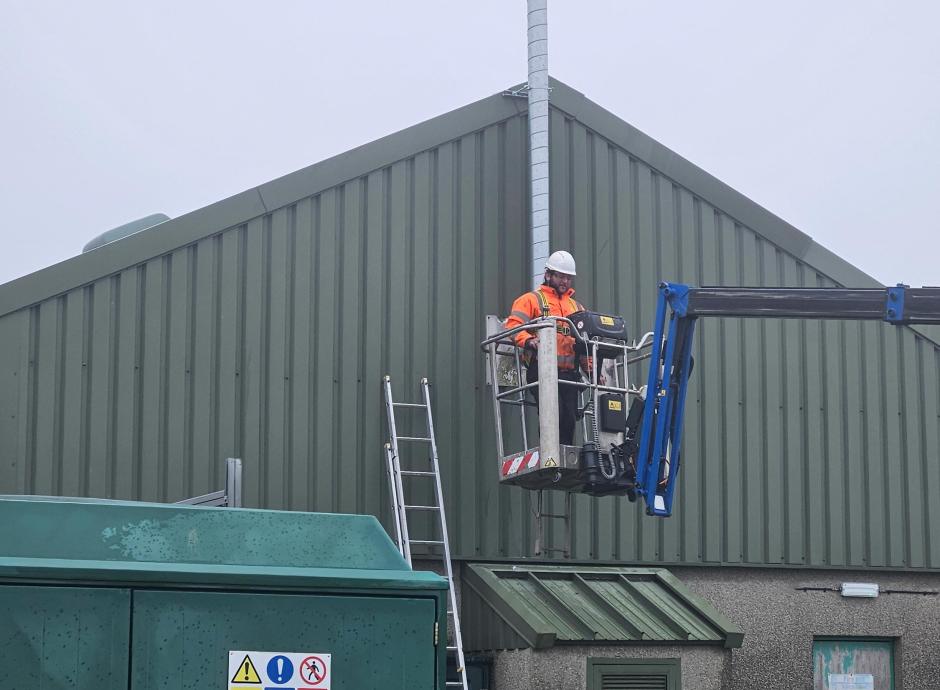
Background
Local Exhaust Ventilation (LEV) systems are essential for maintaining air quality and ensuring safety in workplaces where hazardous substances are present. These systems capture airborne contaminants at their source, preventing their dispersion into the work environment. However, the effectiveness of an LEV system hinges on its termination above the building. Proper termination ensures that hazardous products are effectively dispersed into the atmosphere, minimizing their impact on both the environment and human health.
Importance of Correct Termination of LEV Systems
1. Dispersion of Hazardous Products
Terminating an LEV system above the building ensures the safe dispersion of hazardous products into the atmosphere. This process is vital for several reasons:
- Minimisation of Ground-Level Contaminant Concentration: Proper dispersion prevents the accumulation of contaminants at ground level, reducing health risks.
- Prevention of Re-entrainment: Correct termination prevents contaminants from being drawn back into the building through windows, air intakes, or ventilation systems.
- Environmental Compliance: Regulations often require that emissions be released at a height and velocity that promote dispersion to avoid violating air quality standards.
2. Role of Jet Cowl in Effective Termination
A jet cowl is a specialized component designed to enhance the dispersion of exhaust emissions. It ensures that the exhaust gasses are ejected at a high velocity, aiding in the dilution and dispersion of contaminants. The benefits of using a jet cowl include:
- Increased Exit Velocity: By accelerating the exhaust flow, a jet cowl helps in projecting contaminants higher into the atmosphere.
- Reduced Downwash: The design of the jet cowl minimizes the risk of contaminants being blown back towards the building.
- Compliance with Standards: Jet cowls can help in meeting stringent environmental and occupational safety regulations by ensuring that emissions are dispersed in a controlled and effective manner.
Case Example: Aviation Fuel Bowser Garage
Scenario
An aviation fuel bowser garage, dealing with hazardous vapors from aviation fuel, required an upgrade to its LEV system. The existing system was insufficient, leading to the risk of vapors accumulating at ground level, posing a fire and explosion hazard near local traffic and personnel.

Intervention
Burgun Contractors were engaged to carry out the upgrade, ensuring the work was done to the highest standards. Their intervention included:
- Assessment and Design: Engineers from Burgun Contractors conducted a thorough assessment of the current system and designed a termination solution incorporating a jet cowl.
- Installation: The jet cowl was installed at a height significantly above the building roofline, ensuring an optimal exit velocity for the exhaust gases and effective dispersion of hazardous vapours away from local traffic and personnel.
- Testing and Monitoring: Post-installation testing was conducted to measure contaminant levels at various points around the garage and in the surrounding environment.

Outcomes
- Improved Air Quality and Safety: Monitoring data showed a significant reduction in contaminant levels within the garage and at ground level around the facility, mitigating fire and explosion risks.
- Regulatory Compliance: The garage achieved full compliance with local air quality and safety regulations, avoiding potential fines and sanctions.
- Enhanced Health and Safety: Employee health complaints related to air quality diminished, and the risk of fire or explosion from hazardous vapors was significantly reduced.
Conclusion
Terminating an LEV system correctly above a building is a critical component of ensuring the effective dispersion of hazardous products. The use of a jet cowl enhances this process by increasing the exit velocity of exhaust gasses, reducing the risk of re-entrainment, and ensuring compliance with environmental standards.
The case of the aviation fuel bowser garage demonstrates the tangible benefits of proper LEV termination, including improved air quality, regulatory compliance, and enhanced workplace safety. Burgun Contractors’ high-standard execution of these works ensured that hazardous vapors were effectively dispersed, reducing risks to local traffic and personnel, and preventing potential fire or explosion hazards. Proper design, installation, and maintenance of LEV termination systems are essential for achieving these outcomes.
Contact Us Today
Ready to elevate your space in the Midlands, London, or the Southwest? Contact the Burgun group for a consultation. Let us bring your vision to life with precision and professionalism.